
River’s End Salt Marsh Restoration – New Bedford, MA
Subcontracted by Charter Contracting Company, LLC, SumCo Eco-Contracting planted over 35,000 herbaceous plugs and 350 shrubs to restore the marsh at River’s End Park in


Subcontracted by Charter Contracting Company, LLC, SumCo Eco-Contracting planted over 35,000 herbaceous plugs and 350 shrubs to restore the marsh at River’s End Park in

The Eel River Headwaters Restoration has been a signature effort for the Commonwealth of Massachusetts environmental restoration efforts since its completion in 2010. This $2

SumCo was contracted by the City of Norwalk to remove the Flock Process Dam located along the Norwalk River. Work included the construction of concrete

This project involved the remediation of a 14 acre highly contaminated site, regrading and replacement with clean soils, and installation of boardwalks and trails. Planting

The size of this restoration was 35 acres and included 65,000 CY of excavation that included 55,000 CY of marsh plain excavation, 10,000 CY of channel excavation and 16,000 CY of imported sand to construct high marsh. New canals were excavated to allow the site to tidal flush in order to establish a new low marsh. Following the restoration a 2,700 LF raised boardwalk was constructed to allow pedestrian access from Mill Creek Park to Secaucus High School along the river.

Sylvan Lake is a 17 acre coastal lake connected to the Atlantic Ocean in the Jersey shore towns of Avon and Bradley Beach. Over decades of a highly developed watershed, the lake’s freshwater sources have shifted from natural inputs to stormwater and roadway runoff. SumCo Eco implemented one of the earliest living shoreline projects in New Jersey – and the outcome was dramatic.

The former estate of Katharine Hepburn is now the backdrop for a new living shoreline that is stabilizing a severely eroding beach and dune system on the coastal spit sheltering wetlands, a salt pond and tidal stream that make up the Hepburn Family Preserve. SumCo Eco was able to assist in the design, and ultimately the construction, of this award-winning project using state-of-the-art construction techniques and materials.

The Columbia Lake Dam was ranked by conservation groups in the top 5% of dams with the highest negative impacts on the East Coast. This dam removal restored connection to the third largest New Jersey tributary to the Delaware, improving water quality in a river that supplies drinking water for 17 million people in four states. The Columbia Lake Dam removal has become a model for the collaboration and partnership efforts needed to remove dams and restore rivers.

SumCo Eco remediated historic debris and landfilled materials that predated the establishment Teaneck Creek Park. Large areas were regraded, seeded and planted with native wetland plugs, herbaceous plants and riparian tree and shrub species to restore wetland habitats. The project improved water quality and water infiltration while restoring habitat for wildlife. Public access amenities included repairs and replacements of footbridges and trails that were impacted by washouts and dense invasive species stands.

Restored a tidal wetland marsh for the NJ Department of Transportation. This mitigation project consisted of excavating a trench through an existing degraded and drowning marsh in order to drain the area of impounded water and restore tidal flush to a newly created wetland, including the construction of both high marsh and low marsh planting areas.

Following dam demolition, 2-3 ton boulders were imported to create a “rock ramp” with 8 elevated stone fish weirs including pipe/head wall construction with low-flow relief notches to enable both fish and kayak paddler passage during lower river flows.

The Kerite Dam (aka Seymour Dam) was initially constructed in the 1850s across the Bladens River, just upstream from its confluence with the Naugatuck River in Seymour, CT. Over time, wear and tear overwhelmed the stone structure.
The dam removal and pond excavation relieved this flooding as well as water seepage into adjacent buildings. The removal and remediation of sediment improved water quality and aquatic habitat along the upstream riparian corridor.

Constructed for the Town of Marblehead, MA, this project included a new concrete retaining wall, and a new rock revetment on the seaward side of the concrete wall. Large stones were placed for the toe of the revetment and wooden fencing installed along the concrete wall.
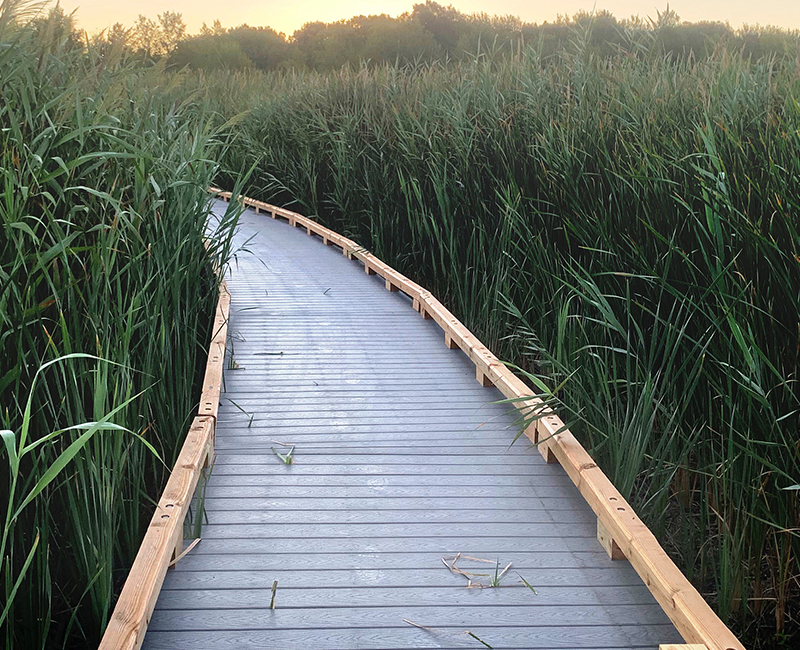
The Hellcat project involved constructing a 4000 lineal foot helical supported boardwalk for the U.S. Fish and Wildlife service. The location was a premier bird watching area used by tens of thousands of birders each year. The project was completed in eight months.
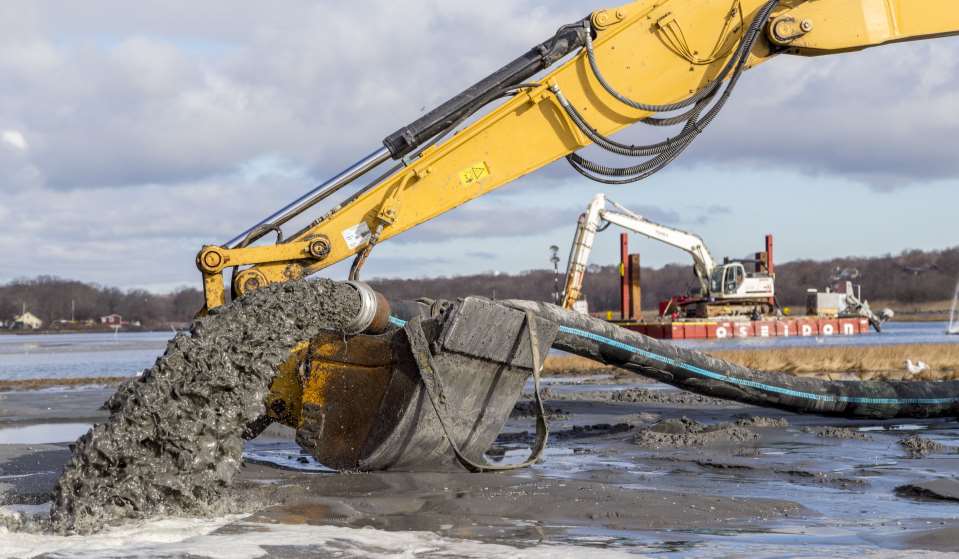
SumCo Eco implemented a cutting edge coastal resilience strategy to address salt marshes impacted by sea level rise on Rhode Island’s Narrow River where it flows through the John H. Chafee National Wildlife Refuge. Working with The Nature Conservancy in partnership with USFWS and the Rhode Island Coastal Resources Management Council, SumCo used the innovative technique of thin-layer deposition of dredge material to create and enhance the eroding and “drowning” marsh resources of this tidal estuary while increasing climate resilience for Narragansett communities.
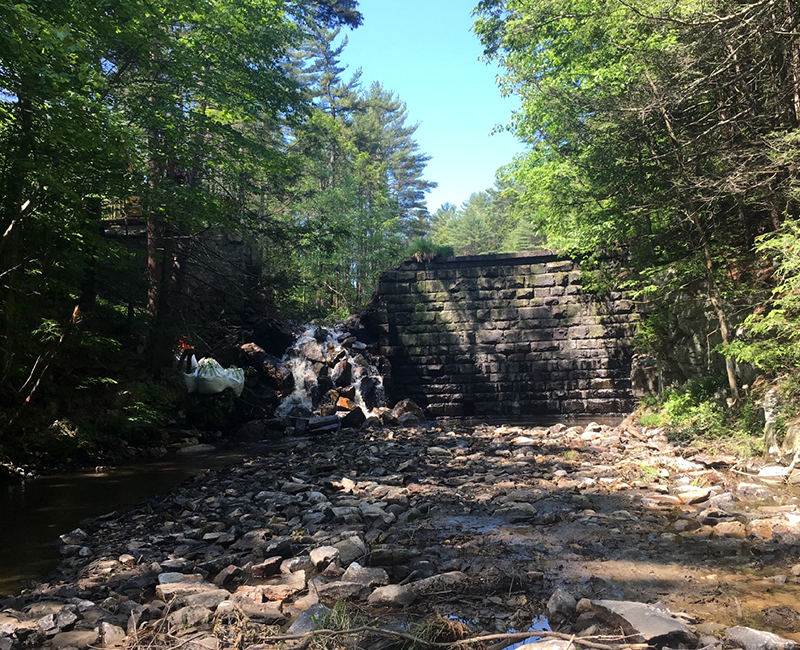
After years of partner efforts, SumCo Eco removed the Upper Roberts Meadow Reservoir Dam in 2018 which at the time, was the tallest dam removed in the state. The project was executed in multiple phases that included staged release of impounded sediment, along with management and monitoring of sediment mobilization to ensure no flooding downstream and no impacts to infrastructure.

This project consisted of the demolition and removal of existing park amenities, followed by the construction of a 1-mile stabilized stone dust trail, a new playground with three timber-framed overlooks, paved parking lots, and other site amenities.
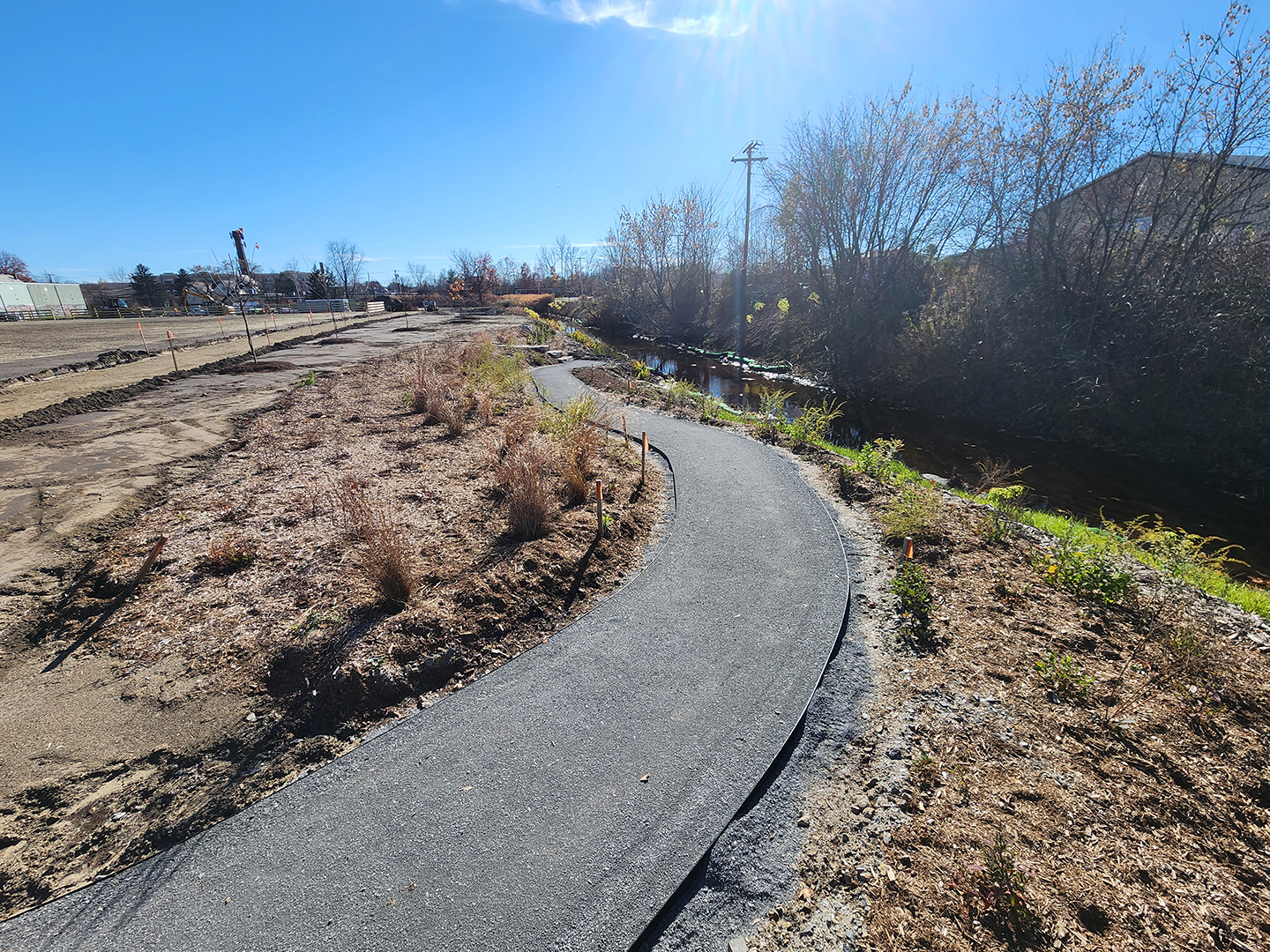
This park project consisted of existing park demo, new field, site amenities, drainage, road work, parking lots, sidewalks, restroom building, landscaping, playgrounds, and stream restoration.

Originally constructed in 1901, the stone dike protects the 2.8-mile barrier beach and was significantly damaged during the blizzard “Juno” in 2015. The Army Corps of Engineers contracted SumCo Eco in efforts to rebuild and repair the damaged dike. With the structure vulnerable to future storm events, this project was essential in increasing coastal resiliency as Long Beach provides shelter between Plymouth Harbor and Cape Cod Bay.

Phase 1 of this 2-phase project consisted of the removal of Lower Bog dam, installation of a public access boardwalk, reconstruction of the river channel, and restoration of 17 acres of wetlands. Then in Phase 2, SumCo Eco removed the Middle Bog dam, installed a public access boardwalk and restored 39 acres wetlands. Additional work included the replacement of three failing culverts with a large box culvert – which will allow migratory fish to access their upstream habitat, including the 158-acre Coonamessett Pond.

Coir envelope installation designed to protect an existing high-end bed and breakfast series of houses from nor’easter storm impacts. The envelopes were 3’ wide x 3’ high and extended approximately 210 lineal feet from the ends of each property. The envelopes were filled with sand and held in place with posts. This is one of the earliest “soft” solutions allowed by the MDEP for stabilizing and protecting a coastal dune. The installation involved installing 5 terrace levels, each 3 feet high starting 3 feet below the beach face and extending to the top of the existing dune on the beach side of the housing structures.

A “heavy duty sand drift fence” is for locations where waves and surf are particularly intense, and therefore the fence has to be designed to withstand such forces during storm season (winter & early spring).

coir envelope installation along a private home owner coastal dune

Collins Cove Salt Marsh Restoration, Salem, MA Ecosystem Restoration & Mitigation Coastal Stabilization Completion:May 2019 Value: $195,000 Project Synopsis SumCo Eco restored this approximately 800

Work included excavation of the site and installation of boulder sills and reef balls in order to create a comprehensive salt marsh. A dune/berm system was also created, the area was seeded, and various native herbaceous plants were planted to further protect the shoreline from erosion.

SumCo Eco constructed a nature-based infrastructure solution for mitigation of the bluff erosion at Rose Larisa Park. In addition to erosion control, a biodegradable shoreline with plantings and an inter-tidal sill along the beach below the bluff was created, as well as a salt marsh for beach protection.

SumCo Eco installed approximately 240 living seawall panels at two locations in Boston, at a City Urban Wilds park and Fan Pier near the Boston Children’s Museum. These panels are designed to provide structural complexity to support biodiversity on traditionally barren seawalls.

The project consisted of renovations and improvements to Louise Levingston Cove, a 0.5 acre park property located along the shoreline of Crystal Lake in Newton, MA. Enhancements were designed and built to ensure accessibility throughout the park, including an ADA-compliant cantilevered fishing platform, viewing areas, and accessible pathways, ramps, and benches.

Dam modifications included new reinforced concrete facing, gates, and safety measures. An Alaskan Steeppass, concrete turning pools, and in-stream weirs were built to enhance fish passage.

SumCo Eco constructed this fish passage, replacing the Kenyon Mill Dam spillway with a rock ramp fishway to pass migratory fish over the dam, including Alewife, Blueback Herring, American Shad, Atlantic Salmon, American Eel, Brown Trout and Brook Trout.

SumCo Eco constructed an aluminum Alaskan Steeppass fish ladder, a concrete-formed entrance box, turnpool and exit box integrated with a notch in the dam crest. A second notch in the dam provides a soft landing for juvenile river herring and other fish leaving the pond into a plunge pool.
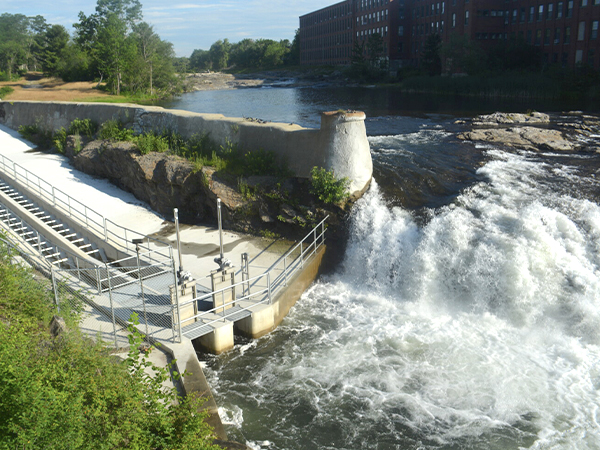
This project involved removal of the 2-story powerhouse, 2 dams 12-30 feet high and 350 feet long alongside the banks of an historic manufacturing center, the filling / grading of the tailrace and the creation of a naturalized fishways with resting pools sculpted in separate channels flowing around an island that will be encompassed into a city park.

The Dudleyville Pond Dam is located on an unnamed tributary to the Sawmill River, on a Coldwater Fish Resource, and upstream of critical habitat. Dam removal will improve the health of the ecosystem and protect public safety by removing this Significant Hazard structure.

As part of the Penobscot River Restoration, the Howland Bypass project increased access to over 1,000 miles of habitat for 11 different species of sea-run

This project consisted of hydraulic maintenance dredging of waterways on the east coast of Virginia in Bradford Bay where approximately 123,000 cubic yards of material

Situated on the Neponset River in Boston’s Dorchester neighborhood is this award-winning restoration project of the former Shaffer Paper Company site. What had been an

Restoration of a 19-acre former sawmill to a naturalized area and park with walking trails, boardwalks, and piers. Over the course of the project, a

This river daylighting project involved the removal of 250′ of stone culvert and 30′ of concrete pipe to daylight a stream that had been buried

The removal of the 180′ Pond Lily Dam and ensuing restoration of the upstream river channel included construction of approximately 200′ of riffles and rock

Subcontracted by Charter Contracting Company, LLC to help complete the first Phase I of the high profile Muddy River Flood Damage Reduction and Environmental Restoration
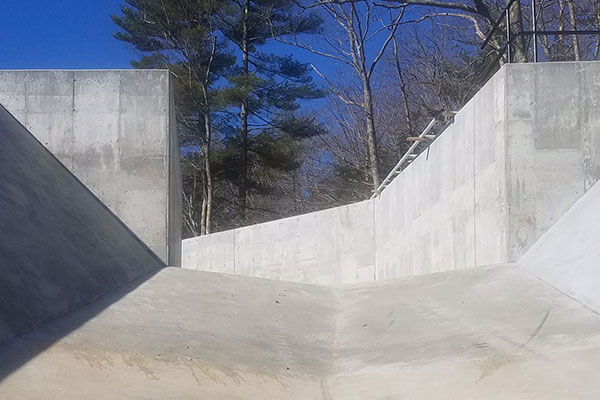
The Haskell Pond Dam holds back a 60-acre impoundment which serves as a drinking water supply for the city of Gloucester, Massachusetts. The dam was

Located within the Alewife Brook Reservation in Cambridge, Massachusetts Blair Pond had over many years experienced deteriorating water quality and become inundated with contaminated sediment

Nearly 20 years ago, SumCo Eco-Contracting co-founders Chad and Travis Sumner created this 25,000 square foot saltwater marsh in Chelsea Creek, Boston, an early Living Shoreline.

Little Bummet Brook was formerly located between the customer parking lot and the retail shops at Shrewsbury Village. Once an aesthetic feature of the retail

Located in Tisbury, Massachusetts the Mink Meadows Association and surrounding area had in recent years experienced deteriorating conditions for recreation due to excessive presence of

The Northeastern University Marine Science Center located in Nahant, Massachusetts includes a parking area adjacent to a town beach. Battered by severe weather, the beach

SumCo Eco-Contracting completed major repairs to the western face of the Prudence Island Ferry Dock to increase structural integrity of this vital coastal infrastructure located

SumCo Eco-Contracting stabilized this critical bank area on the Merrimack River for the City of Haverhill, Massachusetts using a combination of hard-armored toe, bioengineered slope

On this early project, co-founders Chad and Travis Sumner excavated spoils from a filled salt marsh that had served as a landfill, and restored the

Major storm events had severely eroded Salisbury Beach, exposing adjacent homeowners and infrastructure to potentially catastrophic conditions. SumCo Eco-Contracting mobilized and completed major elements of

In response to repeated flood events in the City of Peabody, Massachusetts SumCo Eco-Contracting constructed a large stormwater detention basin to expand stormwater storage capacity

Undersized culverts pose flood-related risks to surrounding neighborhoods and infrastructure, while harming local ecology through reduced natural marsh and wetland system hydraulic connectivity. SumCo Eco-Contracting

“A vast expanse of cold-water streams, ponds, forest, and woodlands, Tidmarsh is a 481-plus acre landscape permanently protected and open for all to enjoy. Once
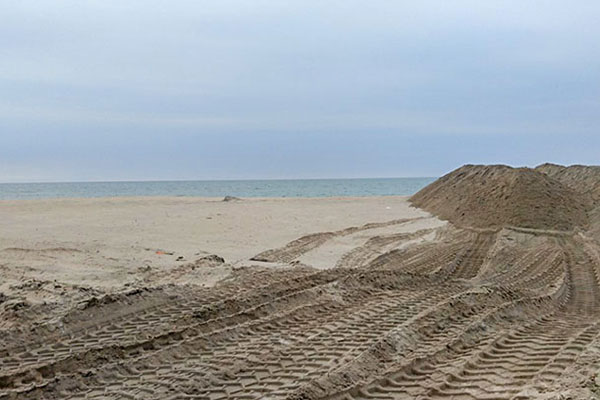
Between August 1943 and March 1947 the Great Pond Dune on Martha’s Vineyard was used as a practice dive bombing and strafing site, and was now
